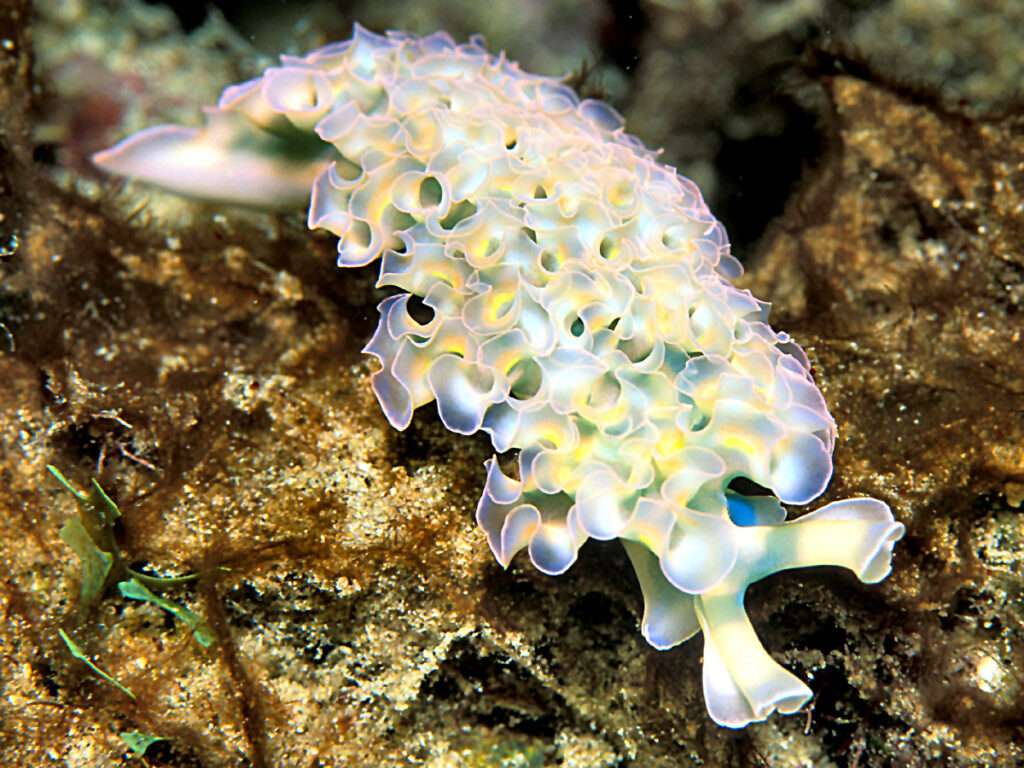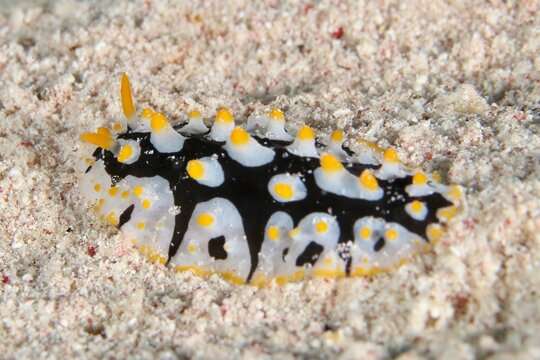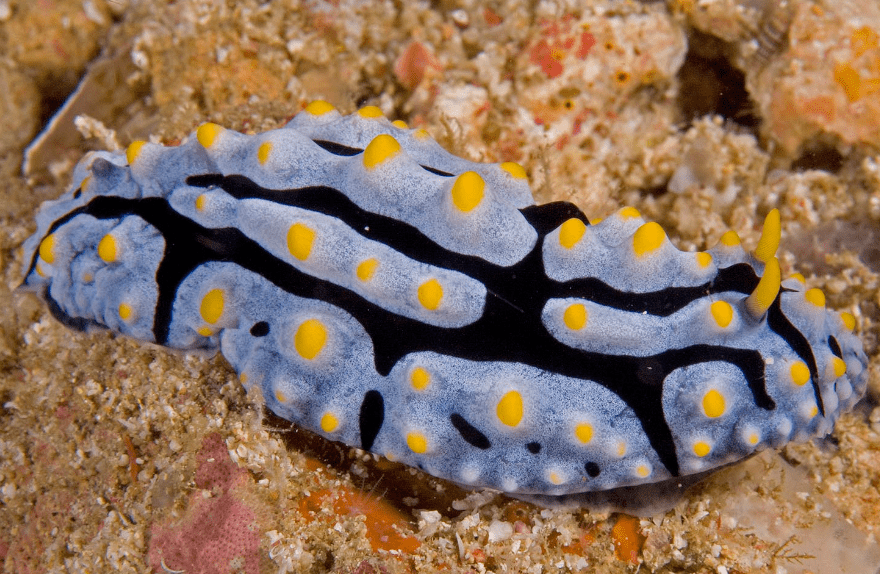
Description
The lettuce sea slug, also known as Elysia crispata, is a huge and vibrant species of sea slug, a marine gastropod mollusk. This species is known as the “lettuce slug” because its parapodia always have a very frilly edge and it frequently has a green colour. This makes the slug resemble curled lettuce varieties like the lollo rosso variety. This species can grow to a maximum length of 5 cm and a maximum width of 3 cm. The colour of the lettuce slug varies greatly; it can also be blue or very pale with red or yellow lines.
Geographical Distribution
From the Florida Keys to Bermuda, Elysia crispata can be found; it is a native of the Caribbean Sea. Elysia crispata loves tropical reefs and does best in areas with lots of algae, typically at depths between 0.5 and 12 metres.
Behavior
Elysia crispata is a mobile species that only becomes sessile as an infant in order to harness light energy. Because they are hermaphrodites, members of this species need a partner in order to procreate. Their social structure, geographic range, and communication techniques are all unknown.

Keeping as Pet
Care
Aquariums with lots of live rock and space for them to hunt for algae are ideal environments for lettuce sea slugs. It is not advisable to keep this species alongside rowdy fish that will pick at it or otherwise hurt it. The Lettuce Sea Slug, however, ought to feel right at home in the majority of reef aquariums. Pump intakes, drainage, and specific kinds of powerheads can all be harmful to lettuce sea slugs.
To prevent the Lettuce Sea Slug from being pulled in and damaged or killed, it is crucial to screen the intakes of these devices. Lettuce sea slugs, like many invertebrates, have no tolerance for copper and have a low tolerance for high nitrate levels in the water.
Feeding and Nutrition
As herbivores, lettuce sea slugs graze on various kinds of algae in the aquarium and on live rock. They even incorporate the chloroplasts (the cell components involved in photosynthesis) from the algae into their tissues, making them dependent on photosynthesis for a portion of their food supply. This species shouldn’t require any additional food if enough room, live rock, and high-quality, fluorescent light are provided.
Table





